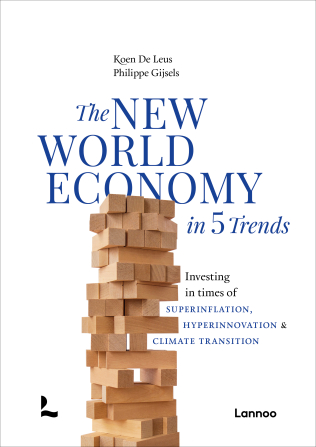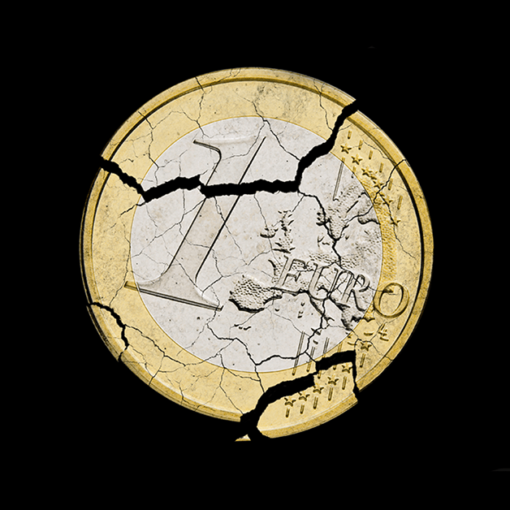[ad_1]
“You cannot anticipate exactly how these risks or dangers are going to play out. . . . But we should be pretty assertive in insisting that we need certain principles, including enough capital buffers — that is, equity unencumbered by any kind of contingent debt or anything like that — that can really withstand shocks in the core of our financial system.” — Simon Johnson, Co-Chair, CFA Institute Systemic Risk Council (SRC)
The effects of potential crises and dislocations on the global financial system and on systemic risk, in particular, can’t all be forecast in advance. The best we can do is prepare for a range of systemic risks and ensure that markets have the right infrastructure and regulatory frameworks in place to weather the storms.
In the case of the war in Ukraine and other geopolitical conflicts, that means understanding the consequences of sanctions, embargos, and potential tariffs and countering the spillover effects on energy, food, and other commodities markets. For financial institutions, that means enough liquidity to withstand unanticipated shocks. For stablecoins, cryptoassets, and other newer markets, it means having the regulatory oversight, authority, and mechanisms in place to protect investors.
Simon Johnson, former IMF chief economist and co-chair of the CFA Institute Systemic Risk Council (SRC), thinks about issues like these every day. He sat down to talk about systemic risk and the many pressing challenges affecting global economies and the global financial system with SRC executive director Kurt Schacht, CFA, at the Alpha Summit GLOBAL by CFA Institute in May 2022.
War in Ukraine
What implications does the ongoing war in Ukraine have on systemic risk? “We are watching this very carefully,” Johnson said. “[You] have the Russians who are trying to drive up gas prices in Europe. They’ve actually been very successful in that. They’re trying to disturb and unbalance the global oil market — a bit more mixed results on that, but they’re definitely still having a go. And all of those things, of course, feed into inflation, particularly headline inflation. Food prices have been impacted, energy prices absolutely impacted.”
Will the conflict threaten the solvency of financial institutions? “That is the question of the day and every day right now,” Johnson said. “The key is capital. How much equity do we have in the financial system as buffers against losses? That was the problem globally in 2008 and was a big recurring problem in Europe after 2010.”
But there’s good news. The reforms instituted in the aftermath of the global financial crisis (GFC) in the United States and Europe were more effective than many people, Johnson among them, might have anticipated. “So banks are better prepared for unexpected shocks,” he said. “And unexpected shocks — well, we just had two big ones in the last two years basically.”
“This is a big stress test,” Johnson continued. “COVID was a real stress test. Let’s agree on that. But COVID actually played out in some ways better and easier. There was a pretty unified and well-organized government response for a while on the economic dimensions at least. Now we’re dealing with something much more complicated, I would suggest, and likely more difficult.”
Johnson has written extensively on how to respond to Russia’s invasion of Ukraine, whether in the form of sanctions, the oil embargo, tariffs, or other actions. He worries about Russia shutting down the grain and agriculture trade in the region. “This is another way they are malevolently putting pressure on the world,” he said. “And I think we need better coordinated, I would propose G7-led, responses to that economic issue, which is a massive overlay with national security considerations.”
Climate Change as Systemic Risk
What role if any should central banks play in addressing climate change risk? According to Johnson, there’s now a consensus in both industrial countries and emerging markets that climate change could impact the financial system either directly or indirectly through its economic impact. “I think that’s actually already decided,” he said. “I think central banks want to go there.”
The question is how.
“There is some ongoing debate about exactly what central banks should do — what instruments they have, what’s the appropriate scope for action. Is it a proactive thing directly to do with financing energy, or is it more about capital buffer and how do we calibrate that?” he said. “That’s a very active, somewhat technical discussion that doesn’t always come out clearly in the public context.”
Johnson emphasized that part of the role of the SRC is to get involved and make sure its members understand the issues, that they are talking to the officials, and really engaging with them on those kind of technical but critical details.
Johnson believes both the physical risks of climate change and the energy transition risks in reaching net zero are interconnected and systemic.
“I think in the US military there’s a saying along the lines of ‘Plans are worthless, but planning is everything.’ I think that same thing goes for systemic risk,” Johnson said. “Because markets are going to go up, markets are going to go down. Financial institutions are going to fail. The questions are, Does that affect the core of the financing of your economy? Does it have spillover effects into energy prices, for example? Does that affect, in some destabilizing way, the macro economy? Those are the issues we have to keep at every day.”
Stablecoins, Crypto Assets, and CBDCs
The SRC has been outspoken about the need for regulatory action around “stablecoins” and issued a letter to the US Treasury and members of the Financial Stability Oversight Council (FSOC) in February 2022 urging action to “address the risks to U.S. financial stability posed by unregulated stablecoins.” The SRC recommended that FSOC designate stablecoins as systemically important payment, clearing, and settlement activities and asked FSOC member agencies to use their existing authorities to oversee and regulate stablecoin markets.
Johnson pointed out that having some markets for assets that go up and go down is not by itself inherently systemic. But in the SRC’s view, if the public regards stablecoins as equivalent to cash money in the conventional US sense, they have potentially systemic implications.
“This is banking without a license, and banking without a license typically ends in tears,” he said. “That’s what we said in the comment letter, and we support actions to get ahead of this issue.”
More recently, in the face of the Terra collapse, SRC member and former FDIC chair Sheila Bair stressed the need for immediate action, even if the regulatory authority is not entirely clear. “It is time for regulators to get creative and use their current powers to act,” she wrote.
“I think many people in those markets or innovators in those markets have resisted regulation and now, perhaps, are learning some of the consequences of not having appropriate degrees of regulation,” Johnson said.
US Treasury Secretary Janet Yellen has advocated for legislation to regulate stablecoins issuers, but getting that legislation through Congress will be a long and fraught process.
“There’s clearly some tension there within official circles,” Johnson said. “But we are still on the side of believing that there is enough legislative authority and regulatory authority already in existence. And it needs to be used.”
One related area the SRC has its eye on is central bank digital currencies (CBDCs). “There certainly is an organized push or consideration of the [CBDC] issues within the central bank community,” he said. “That, of course, is partly in response to cryptoassets and partly attempting to ensure that the US dollar is available through appropriate channels and appropriate mechanisms to people who need it and want to use it.”
The application of CBDCs in wholesale as opposed to retail markets is one area that’s sparked interest among central bankers. They are now running experiments using CBDCs to speed cross-border payments and move funds between financial institutions and central banks to see if the process is more efficient.
Central banks are gathering the data on the potential for CBDCs, and we’ll know a lot more in about 12 months, Johnson said. The crypto market’s recent travails and stablecoin-related issues will inform their decision making around CBDCs. “Central banks will be reflecting further on whether the CBDC would actually enhance stability,” he said, “or whether it could be potentially destabilizing.”
For more commentary on CBDCs, see the CFA Institute response to the US Federal Reserve’s consultation paper, “Federal Reserve System: Money and Payments: The U.S. Dollar in the Age of Digital Transformation.”
If you liked this post, don’t forget to subscribe to the Enterprising Investor.
All posts are the opinion of the author. As such, they should not be construed as investment advice, nor do the opinions expressed necessarily reflect the views of CFA Institute or the author’s employer.
Image credit: ©Getty Images/Posnov
Professional Learning for CFA Institute Members
CFA Institute members are empowered to self-determine and self-report professional learning (PL) credits earned, including content on Enterprising Investor. Members can record credits easily using their online PL tracker.
[ad_2]
Source link










 Bitcoin
Bitcoin  Tether
Tether  XRP
XRP  USDC
USDC  Lido Staked Ether
Lido Staked Ether  Dogecoin
Dogecoin  LEO Token
LEO Token